#cleanroom construction materials
Explore tagged Tumblr posts
Text
UTOPIA’s Commitment to Cleanroom Excellence: A Comprehensive Overview

Cleanroom environments are critical for industries that demand high levels of sterility and contamination control, such as pharmaceuticals, biotechnology, and semiconductor manufacturing. UTOPIA’s Cleanroom Division has established itself as a leader in providing unparalleled services and products tailored to meet the stringent requirements of these industries. From advanced laundry facilities to state-of-the-art cleanroom clothing and garment testing, UTOPIA delivers excellence at every step.
A Glimpse into UTOPIA’s Cleanroom Division
At UTOPIA, we take pride in offering:
• Maintaining cleanroom garments is a meticulous process that demands precision and adherence to strict protocols. UTOPIA’s laundry services are designed to meet and exceed industry standards, ensuring garments are decontaminated, sanitized, and ready for reuse without compromising their integrity or performance.
• Our cleanroom garments are crafted to provide optimal protection against particulate contamination while ensuring wearer comfort. These garments are made from premium materials and are designed to withstand the rigors of cleanroom environments.
• To guarantee the highest levels of performance, UTOPIA offers comprehensive inspection and testing services. These facilities ensure that every garment meets stringent cleanliness and durability standards before being deployed.
Cutting-Edge Innovations: ULPA Gel Grid Ceiling Systems
UTOPIA is proud to be the one and only company in Asia utilizing ULPA (Ultra-Low Penetration Air) gel grid ceiling systems in our Class 10 laundry facility. This advanced technology highlights our commitment to innovation and excellence, allowing us to deliver unmatched cleanliness and sterility.
ULPA filters are capable of capturing 99.5% of particles as small as 0.12 microns, making them a cornerstone of modern cleanroom technology. By integrating these filters into our gel grid ceiling systems, UTOPIA ensures an ultra-clean environment for garment processing, minimizing the risk of particle contamination.
The Importance of First-Class Laundry Services
Proper maintenance of cleanroom garments is essential to preserving their functionality and extending their lifespan. Our laundry services employ advanced cleaning techniques and equipment to remove contaminants without damaging sensitive fabrics. Our Class 10 laundry facility operates under strict protocols, ensuring garments are processed in an environment that meets the highest cleanliness standards.
Key Features of UTOPIA’s Laundry Services:
• Our facilities utilize cutting-edge equipment and cleaning agents specifically designed for cleanroom garments. • Continuous monitoring of particle levels ensures compliance with strict cleanroom standards. • Delicate fabrics and specialized designs are handled with care to maintain their protective properties.
High-Quality Cleanroom Clothing: Designed for Excellence
Cleanroom clothing serves as a critical barrier between the wearer and the controlled environment. UTOPIA’s garments are meticulously designed to minimize particulate generation and ensure maximum comfort and mobility for the wearer.
Features of UTOPIA’s Cleanroom Clothing:
• Our garments are made from materials engineered to resist particle shedding and contamination. • We offer a range of styles and sizes to accommodate diverse needs, ensuring a perfect fit for every user. • Our clothing is designed to withstand repeated cleaning and sterilization cycles without compromising performance.
Inspection and Testing: Ensuring Reliability
To uphold the highest standards of cleanliness and functionality, UTOPIA provides robust inspection and testing services for cleanroom garments. Our facilities are equipped with advanced tools and technologies to evaluate garments for:
• Particulate Contamination: Rigorous testing ensures that garments meet cleanliness standards. • Material Integrity: Fabrics are inspected for wear and tear to guarantee durability. • Design Compliance: Each garment is checked to ensure it adheres to specifications and performance requirements.
UTOPIA’s Industry Leadership in Asia
As the only company in Asia utilizing ULPA gel grid ceiling systems in a Class 10 laundry facility, UTOPIA sets a new benchmark for cleanroom garment services. This distinction reflects our unwavering commitment to providing superior solutions that align with the evolving needs of our clients.
Why Choose UTOPIA?
• UTOPIA with years of experience in the cleanroom industry, We offer unparalleled knowledge and proficiency. • Our adoption of ULPA gel grid technology highlights our dedication to staying at the forefront of cleanroom advancements. • We prioritise client satisfaction by delivering tailored solutions that meet specific requirements.
Supporting Critical Industries
UTOPIA’s Cleanroom Division serves a diverse range of industries where contamination control is paramount. From pharmaceutical manufacturing to semiconductor production, our solutions play a vital role in maintaining product quality and operational efficiency.
Applications of Our Services:
• Pharmaceuticals: Ensuring sterility for drug production and research environments. • Semiconductors: Protecting sensitive components from particulate contamination. • Biotechnology: Supporting the development of cutting-edge therapies in clean environments.
UTOPIA’s Cleanroom Division represents a commitment to excellence, innovation, and reliability. Through first-class laundry services, high-quality cleanroom clothing, and rigorous inspection and testing, we provide comprehensive solutions that address the unique challenges of contamination control. Our exclusive use of ULPA gel grid ceiling systems in Asia further demonstrates our leadership and dedication to advancing cleanroom standards.
As industries continue to demand higher levels of cleanliness and precision, UTOPIA remains at the forefront, delivering solutions that meet and exceed expectations. Partner with us to experience the pinnacle of cleanroom garment services and elevate your operations to new heights of excellence.
In Order To Find Out More Details On Airtech Equipments Please Be Touch With Us Today Onwards..!
#Airtech Equipments#Airtech Equipments Singapore#Cleanroom Construction Materials#Cleanroom Products#Cleanroom Equipments#Cleanroom Products Singapore#Cleanroom Equipments Singapore#infection control#cleanroom chairs & furnitures#operating room/ surgical room#bio-decontamination singapore#bio-decontamination#bsc bio-safety laboratory equipments
0 notes
Text
Controlling rising construction costs
In the current landscape of escalating taxes, soaring utility expenses, manufacturing and shipping costs along with the general upkeep of buildings, the construction industry is grappling with a significant surge in material prices. Suppliers, in an attempt to offset their mounting overheads, are passing on the burden to consumers, resulting in an undeniable hike in construction costs. Amidst these challenges, the need for a more streamlined and cost-effective approach becomes increasingly apparent.
Enter www.commwall.ca, a pioneering force reshaping the dynamics of the construction and building materials sector. Recognizing the urgency of the hour, www.commwall.ca is committed to offering a comprehensive range of building materials, tools, and apparel at direct pricing. The platform goes a step further, extending exclusive discounts to registered installation companies and dealers, with even greater incentives for full pallet orders.
Unlike traditional norms that often required bulk truckload purchases for substantial discounts, www.commwall.ca breaks the mold by negotiating smaller quantity bulk deals. This revolutionary approach allows businesses to invest less capital, maintain minimal standing inventory, and simultaneously enhance profit margins. The result is a win-win scenario, where contractors not only optimize their returns but also pass on the savings to clients, making their project bids more competitive.
www.commwall.ca stands out as a leader in the Canadian building materials industry with an ever-expanding array of manufacturers and products. This diversity ensures that Canadian contractors have access to a wide selection, meeting the demands of today's dynamic construction environment. By embracing www.commwall.ca, industry professionals can navigate the challenges of rising costs, ultimately fostering a more efficient and economically viable construction landscape.
In a world where direct shipping and bulk purchases have become essential for cost-conscious construction projects, www.commwall.ca emerges as the clear choice for Canadian contractors. Visit their website to explore the extensive offerings and revolutionize the way you approach construction material procurement.
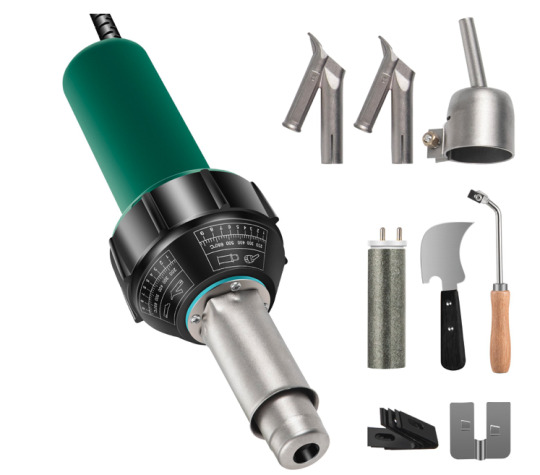
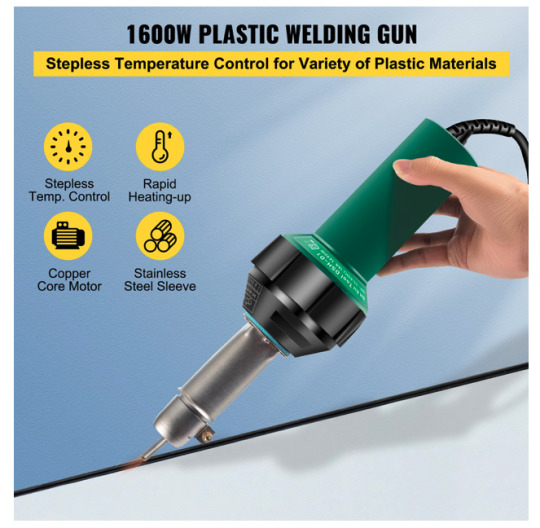
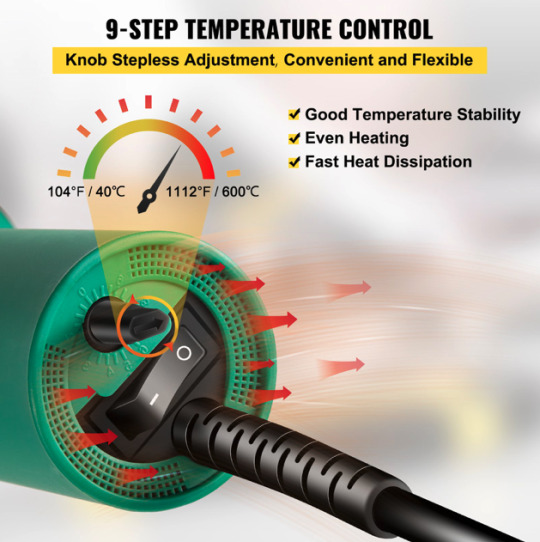
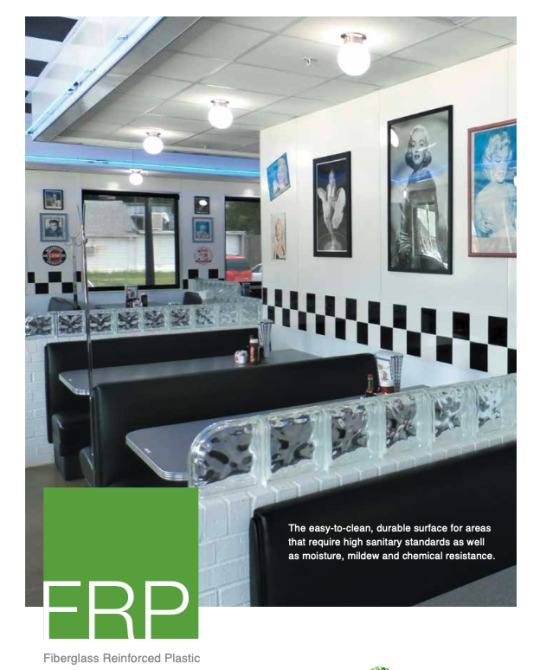
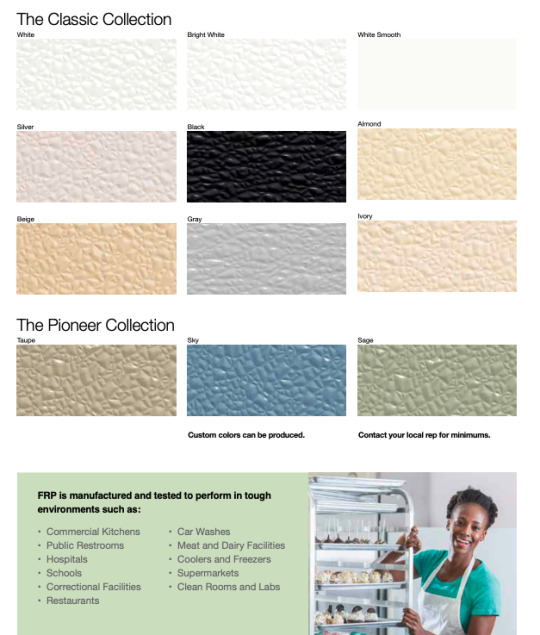

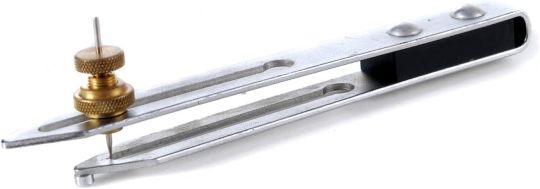
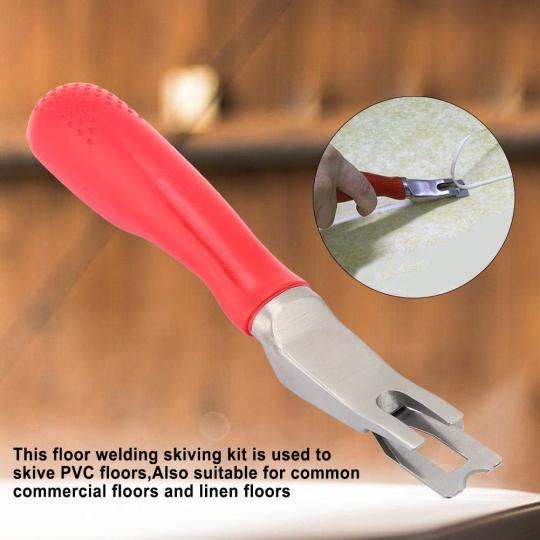




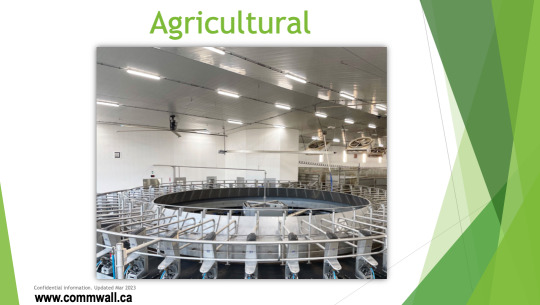
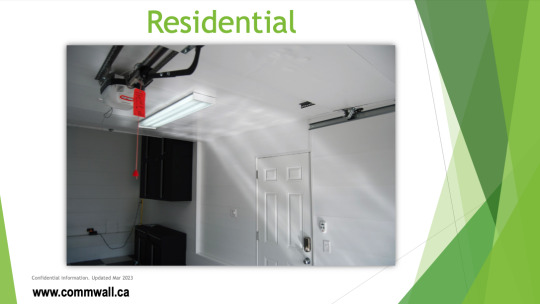
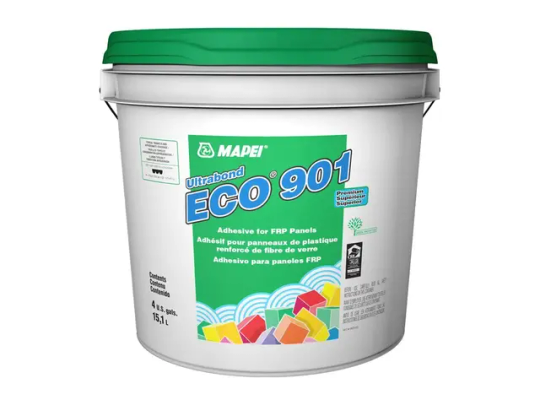

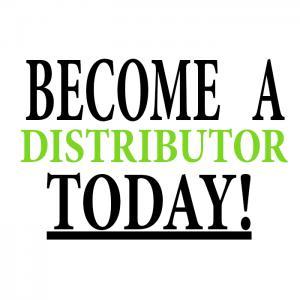
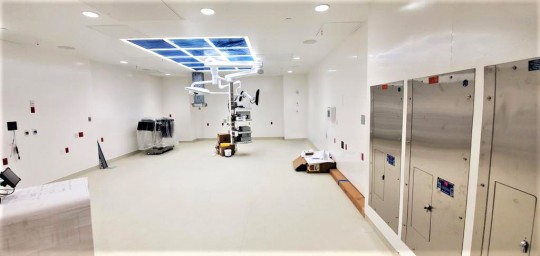
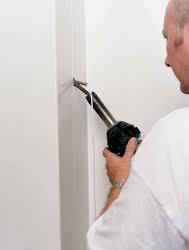
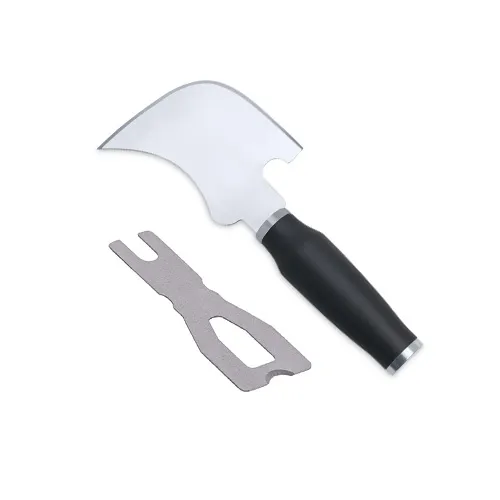



#business#entrepreneur#economy#construction#building materials#healthcare#startup#ecommerce#hygienic#contractor#project managers#construction estimating services#tools#installation#jack of all trades#commercial#prevention#antimicrobial#cleanroom#mortuary science#veterinary#dental#clinic#safety#food safety#agriculture#cannabis
1 note
·
View note
Text
Modularcleanroomindia - Modular Operation Theatre
What is a Modular Operation Theatre?
A modular operation theatre is a prefabricated, highly customizable surgical suite designed to meet the highest standards of hygiene, safety, and efficiency. These theatres are constructed using prefabricated modules that can be easily assembled, disassembled, and reconfigured to suit the specific needs of a healthcare facility. The modular approach allows for rapid installation, minimal disruption, and cost-effective scalability.
Key Features and Benefits of Modular Operation Theatres
1. Enhanced Sterility
Sterility is the cornerstone of any successful surgical procedure. Modular operation theatres from Modular Clean Room India are designed with advanced air filtration systems, including HEPA filters, to ensure a controlled and contaminant-free environment. These theatres also feature seamless wall and ceiling panels that prevent the accumulation of dust and pathogens, reducing the risk of surgical site infections.
2. Customizable Design
One of the most significant advantages of modular operation theatres is their customizable nature. Healthcare facilities can tailor the design of the theatre to meet their specific requirements. This includes the placement of medical equipment, lighting, and surgical workstations. Modular Clean Room India offers a range of customizable options to ensure that each theatre meets the unique needs of the surgical team.
3. Rapid Installation and Scalability
Traditional construction methods for operation theatres can be time-consuming and disruptive. Modular operation theatres, on the other hand, offer rapid installation with minimal downtime. The prefabricated modules can be assembled on-site quickly, allowing healthcare facilities to expand their surgical capacity without prolonged interruptions. Additionally, the modular design allows for easy scalability, enabling facilities to add or reconfigure theatres as needed.
4. Compliance with International Standards
Modular Clean Room India ensures that all modular operation theatres comply with international healthcare standards and guidelines. These theatres are designed to meet the stringent requirements of organizations such as the World Health Organization (WHO) and the International Organization for Standardization (ISO). This compliance guarantees that the theatres provide a safe and effective environment for surgical procedures.
5. Energy Efficiency and Cost Savings
Modular operation theatres are designed with energy efficiency in mind. Advanced HVAC systems, LED lighting, and energy-efficient materials help reduce the overall energy consumption of the theatre. This not only contributes to a more sustainable healthcare environment but also results in significant cost savings for healthcare facilities over time.
6. Future-Proofing Healthcare Infrastructure
The healthcare industry is constantly evolving, with new technologies and surgical techniques emerging regularly. Modular operation theatres provide a future-proof solution that can adapt to these changes. The modular design allows for easy upgrades and modifications, ensuring that healthcare facilities can keep pace with advancements in surgical care without the need for extensive renovations.
Modular Clean Room India: Pioneering Excellence in Healthcare
Modular Clean Room India has established itself as a trusted provider of high-quality cleanroom solutions, including modular operation theatres. With a commitment to innovation, quality, and customer satisfaction, the company has delivered state-of-the-art surgical suites to healthcare facilities across the country.
Expertise and Experience
With years of experience in the cleanroom industry, Modular Clean Room India brings unparalleled expertise to the design and implementation of modular operation theatres. The company’s team of skilled professionals works closely with healthcare providers to understand their unique needs and deliver customized solutions that exceed expectations.
Commitment to Quality
Quality is at the heart of everything Modular Clean Room India does. The company uses only the highest quality materials and components in the construction of its modular operation theatres. Rigorous quality control processes ensure that each theatre meets the highest standards of safety, sterility, and functionality.
Comprehensive Service
Modular Clean Room India offers a comprehensive service that includes consultation, design, installation, and ongoing support. The company’s dedicated team is available to provide guidance and assistance at every stage of the project, ensuring a seamless and stress-free experience for healthcare providers.
Conclusion
Modular operation theatres represent the future of surgical excellence, offering a versatile, efficient, and cost-effective solution for modern healthcare facilities. With their enhanced sterility, customizable design, rapid installation, and compliance with international standards, these theatres are transforming the landscape of surgical care. Modular Clean Room India is proud to lead the way in delivering these innovative solutions, helping healthcare providers create safe and effective environments for life-saving surgeries.
For more information about Modular Clean Room India and their modular operation theatres, visit their website or contact their team of experts today.
2 notes
·
View notes
Text
What Are The Types of PPE Clothing?
Personal Protective Equipment (PPE) clothing is designed to protect the wearer from various hazards and risks in the workplace or during specific activities. The types of PPE clothing can vary depending on the type of hazard or risk involved. Here are some common types of PPE clothing:
1. Disposable coveralls: Disposable coveralls are typically made of lightweight and breathable materials that protect against dust, dirt, and other contaminants. They are commonly used in cleanrooms, food processing plants, and medical facilities.
2. Chemical-resistant suits: Chemical-resistant suits are designed to protect against chemical splashes and spills. They are typically made of materials such as Tyvek, PVC, or neoprene.
3. Flame-resistant clothing: Flame-resistant clothing is made of materials that do not catch fire easily, such as treated cotton, Nomex, or Kevlar. It is commonly used in industries such as firefighting, welding, and electrical work.
4. High-visibility clothing: High-visibility clothing is designed to be easily seen in low light or high-traffic areas, such as construction sites or roadways. It is typically made of fluorescent materials and reflective tape.
5. Cold-weather clothing: Cold-weather clothing is designed to keep the wearer warm in low-temperature environments. It may include insulated jackets, pants, gloves, and hats.
6. Cut-resistant clothing: Cut-resistant clothing is designed to protect against cuts and punctures from sharp objects. It may include gloves, sleeves, and jackets made of materials such as Kevlar or steel mesh.
7. Respiratory protective equipment: Respiratory protective equipment, such as N95 masks, respirators, and SCBA (self-contained breathing apparatus), protect against airborne hazards such as dust, smoke, and chemicals.
It's important to note that the specific types of PPE clothing required will vary depending on the nature of the job or activity being performed, the workplace environment, and the specific hazards and risks present. Employers should assess the workplace hazards and provide appropriate PPE to employees to ensure their safety.
Learn more...
971-217-7770
wholesaleonlinegroup.com
wholesalesafetysupply.com
wholesaleworkwearsupply.com
#wholesalesafetysupply#ppe#personalprotectiveequipment#high visibility#cutresistantglove#wholesaleonlinegroup#wholesaleworkwearsupply#wholesalevendors#workwear
2 notes
·
View notes
Text
Ceiling Containment Cost: Factors That Influence Your Overall Budget

Ceiling containment systems play a critical role in various industries, including healthcare, data centers, manufacturing, and construction. They help in controlling airflow, maintaining cleanliness, enhancing energy efficiency, and ensuring compliance with safety regulations. However, installing and maintaining a ceiling containment system involves a significant investment. Understanding the factors influencing the overall cost can help businesses and facility managers make informed decisions and optimize their budgets.
Key Factors Affecting Ceiling Containment Costs
1. Type of Ceiling Containment System
Different types of ceiling containment solutions come with varying costs. Some of the common types include:
Hard containment systems (fixed panels or walls) are more expensive but provide superior durability and effectiveness.
Soft containment systems (curtains or flexible barriers) are more cost-effective but may not offer the same level of performance and longevity.
Hybrid containment solutions combine elements of both hard and soft systems to balance cost and efficiency.
Choosing the right type based on your facility's needs will significantly impact the budget.
2. Material Selection
The choice of materials plays a crucial role in determining costs. High-quality materials such as:
Polycarbonate and acrylic panels – Durable and offer excellent visibility but come at a higher price.
PVC or vinyl curtains – Affordable and flexible but may require frequent replacement.
Aluminum or steel frameworks – Provide structural integrity but increase installation costs.
Opting for durable materials may have higher upfront costs but can lead to long-term savings by reducing maintenance and replacement needs.
3. Size and Scope of the Project
Larger containment areas require more materials and labor, increasing costs. The complexity of the space, such as high ceilings, irregular layouts, or extensive cabling and ductwork, may also add to the expenses.
4. Installation Complexity and Labor Costs
Custom-built systems with precise specifications require skilled labor, increasing installation costs.
Pre-fabricated modular solutions can be more cost-effective and quicker to install.
Local labor rates impact the budget, as costs vary based on region and contractor expertise.
5. Regulatory Compliance and Safety Requirements
Industries like healthcare and data centers have stringent compliance requirements (e.g., fire safety codes, cleanroom standards, and OSHA regulations). Meeting these standards may require specialized materials, additional testing, and professional certification, which can increase costs.
6. Energy Efficiency Considerations
Proper ceiling containment can improve HVAC efficiency by directing airflow appropriately, reducing energy consumption. Investing in an energy-efficient design may have higher initial costs but lead to significant savings in operational expenses.
7. Maintenance and Long-Term Costs
Regular cleaning, repairs, and upgrades impact the overall budget.
Choosing low-maintenance materials can reduce future costs.
Factoring in the expected lifespan of the containment system helps in long-term financial planning.
8. Customization and Additional Features
Adding features like fire-resistant materials, soundproofing, lighting integration, or automation (e.g., airflow monitoring sensors) can enhance performance but also add to the initial cost.
How to Optimize Your Ceiling Containment Budget
- Assess Your Needs Accurately: Avoid over-engineering by selecting the right type and size of containment for your specific requirements.
- Compare Material Options: Consider the balance between cost and durability to minimize long-term expenses.
- Work with Experienced Contractors: Choose professionals with expertise in ceiling containment to ensure quality installation and avoid costly errors.
- Plan for Future Upgrades: Design a system that allows for modifications or expansion without major overhauls.
- Consider Energy Savings: Opt for designs that improve HVAC efficiency to reduce operational costs over time.
Conclusion
Investing in a ceiling containment system requires careful consideration of multiple factors that influence the overall cost. From material choices and installation complexity to energy efficiency and regulatory compliance, every aspect plays a role in determining the budget. By understanding these cost factors and making informed decisions, businesses can optimize their expenses while ensuring the containment system effectively meets their needs.
For a more accurate estimate tailored to your facility, consult with a professional containment specialist who can provide customized solutions based on your specific requirements.
#CeilingContainment#CostFactors#EnergyEfficiency#ConstructionBudget#HVACSystems#ContainmentSolutions
0 notes
Text
Why Medical Labs Require High-Quality Clean Room Doors

In medical laboratories, cleanliness and safety are paramount. The integrity of the lab environment is critical to accurate testing, research, and patient safety. One often-overlooked but essential component in maintaining a sterile environment is the Clean Room Doors. These doors do more than simply provide access; they are integral to maintaining the strict controls required in medical settings.
The Role of Clean Room Doors in Medical Labs
Clean room doors are designed to keep contaminants out while maintaining a controlled internal atmosphere. In medical labs, where sterile conditions are necessary, the quality of the door and its ability to maintain the integrity of the space are vital. Clean room doors are constructed to prevent contamination, maintain pressure differentials, and provide easy access while complying with stringent safety regulations.
Key Features of High-Quality Clean Room Doors
1. Durability and Material Quality
Medical labs require clean room doors made from high-quality materials that can withstand the constant movement, cleaning, and sterilization processes typical in medical settings. The Clean Room Doors we offer are constructed using GPSP GI Sheet (0.8 mm thick) for standard applications and 1.2 mm thick for fire-rated doors. The door frames are reinforced with 1.2 mm thick for standard doors and 1.6 mm thick for fire-rated doors, ensuring durability and long-lasting performance in high-traffic environments.
2. Precision and Insulation
High-quality Clean Room Doors include high-quality insulation materials to prevent temperature fluctuations and air pressure changes. These doors come with various insulation options, such as PUF (Polyurethane Foam), PIR (Polyisocyanurate), and Rockwool, each offering different levels of insulation to meet specific laboratory needs. This ensures that sensitive equipment, samples, and chemicals are protected from external environmental factors.
3. Size and Customization
Clean room doors come in a range of sizes to fit various lab setups. Standard door widths range from 750 mm to 2200 mm, and thicknesses can vary from 50 mm to 150 mm. This customization allows for flexibility in fitting doors to existing modular wall systems, making it easier to install them without altering the cleanroom layout.
4. Safety and Access Features
For medical labs, safety is non-negotiable. Clean Room Doors come equipped with multiple safety features such as:
Stainless steel hinges (3–4 per door)
D-Type handles (20 mm dia. with 300 mm length) on the pull side
Push plates for the push side (size 125 x 300 mm)
Dorma make door closure system (TS-68)
Panic bars for emergency exits
View panels with 6 mm thick safety glass
These features not only ensure safe, easy access but also allow for seamless operation and control. For emergency situations, panic bars and automatic bottom seals are critical to maintaining the door’s performance even under stress.
5. Aesthetic and Cleanliness
The finish of the Clean Room Door plays a role in the overall lab environment's appearance and cleanliness. These doors are often powder-coated for durability and an easy-to-clean surface. Additionally, stainless steel options are available, providing a sleek look and superior resistance to corrosion, which is particularly important in sterile settings.
The Importance of Fire Safety in Medical Labs
In addition to their primary function of maintaining cleanliness, fire-rated doors are a vital component of clean room doors in medical environments. Fire safety is critical in labs where chemicals and sensitive equipment are stored. The fire-rated Clean Room Doors are constructed to withstand high temperatures and prevent the spread of fire, ensuring that personnel and sensitive materials are protected in case of an emergency.
Conclusion
High-quality Clean Room Doors are an essential part of maintaining a sterile, controlled environment in medical laboratories. These doors not only serve to regulate air pressure and temperature but also help ensure the safety, accessibility, and cleanliness of the lab. With customizable sizes, insulation options, and safety features, the right clean room door enhances operational efficiency and helps meet regulatory compliance.
For medical labs looking to invest in the best clean room door systems, choosing durable, customizable, and safety-oriented doors is key to ensuring long-term success and protection.
0 notes
Text
Shop Cleanroom Crocs: Antistatic Footwear for Controlled Environments

Bioclean Crocs or cleanroom Crocs shoes feature an antistatic design to minimize the risk of electrostatic discharge, making them ideal for cleanrooms and laboratories. Constructed from lightweight, durable materials, these esd crocs offer comfort and effective contamination control. Their slip-resistant soles enhance safety, while the easy-to-clean surface ensures hygiene in sensitive environments. You can also check out standard cleanroom crocs from Sentinel Laboratories designed specifically for controlled environments.
For more details, you can visit Sentinel Laboratories.
0 notes
Text
The Importance of Pharma Consulting for Cleanroom Solutions
In the pharmaceutical industry, maintaining a controlled and contamination-free environment is critical. Cleanrooms play a pivotal role in ensuring the quality and safety of pharmaceutical products. However, designing, building, and maintaining cleanrooms that meet stringent regulatory standards can be a complex task. This is where pharma consulting for cleanroom solutions becomes indispensable.
What is Pharma Consulting for Cleanroom Solutions?
Pharma consulting for cleanroom solutions involves expert guidance and support in the planning, design, construction, and maintenance of cleanrooms tailored to pharmaceutical applications. Consultants specialize in ensuring that cleanrooms meet industry regulations, such as GMP (Good Manufacturing Practices) and ISO standards, while optimizing operational efficiency.
Key Benefits of Pharma Consulting for Cleanroom
Regulatory Compliance: Cleanrooms in the pharmaceutical sector must adhere to strict guidelines to ensure product safety and quality. Pharma consulting for cleanroom helps navigate complex regulatory requirements, ensuring full compliance.
Custom Solutions: Every pharmaceutical facility has unique needs. Consultants assess your specific requirements and provide tailored cleanroom design solutions, ensuring the perfect balance between functionality and cost-effectiveness.
Expertise in Cleanroom Technology: With advancements in cleanroom HVAC systems and modular cleanroom panels, keeping up with the latest innovations can be challenging. Pharma consultants bring in-depth knowledge of modern cleanroom wall panels, materials, and systems.
Cost and Time Efficiency: By streamlining the design and installation process, consultants help save valuable time and resources, minimizing potential delays and errors in cleanroom installation services.
Risk Mitigation: Consultants proactively identify and address potential risks in cleanroom design for hospitals and other facilities, reducing the likelihood of costly errors or compliance issues.
The Role of Cleanrooms in the Pharmaceutical Industry
Cleanrooms are specialized environments designed to minimize contamination risks during pharmaceutical manufacturing. These environments control factors such as temperature, humidity, air quality, and particle levels to ensure the integrity of sensitive products, such as vaccines, injectable drugs, and sterile formulations. Cleanroom wall panels and HVAC systems play a crucial role in maintaining these controlled environments.
Pharmaceutical manufacturing processes, such as filling, packaging, and testing, require controlled environments to meet stringent regulatory standards. Even minor deviations in cleanroom conditions can result in significant product loss or regulatory penalties, making the role of cleanrooms indispensable in the pharmaceutical industry.
How Pharma Consultants Ensure Cleanroom Excellence
Pharma consulting for cleanroom solutions involves a range of specialized services designed to meet the unique needs of pharmaceutical facilities. Here are some key areas where consultants add value:
1. Site Assessment and Feasibility Studies
Before starting the design process, consultants conduct detailed site assessments to understand the specific requirements of the facility. They evaluate factors such as available space, workflow patterns, and environmental conditions to determine the best layout and cleanroom HVAC manufacturers to partner with.
2. Design and Engineering
Pharma consultants work closely with engineers and architects to develop cleanroom designs that optimize space utilization and ensure compliance with regulatory standards. They consider factors such as airflow patterns, material selection, and the placement of equipment to minimize contamination risks.
3. Vendor Selection and Equipment Procurement
Choosing the right equipment and materials is crucial for cleanroom performance. Consultants assist in selecting reliable HVAC systems, modular cleanroom panels, and filtration systems that meet the specific needs of the facility. They also ensure that all components, including cleanroom wall panels, are sourced from reputable vendors and meet industry standards.
4. Installation and Validation
Pharma consultants oversee the installation process to ensure that cleanrooms are built according to design specifications. They also conduct validation and testing to verify that the cleanroom meets performance standards, such as air cleanliness levels, temperature control, and pressure differentials.
5. Training and Maintenance
Once the cleanroom is operational, consultants provide training to staff on best practices for cleanroom operation and maintenance. They also develop maintenance plans to ensure long-term performance and compliance with standards for cleanroom design for hospitals and pharma facilities.
Challenges in Cleanroom Design and How Consultants Help
Designing and maintaining cleanrooms comes with several challenges, including:
Regulatory Complexity: Navigating the maze of regulatory requirements can be daunting. Pharma consulting for cleanroom solutions ensures compliance with GMP, ISO, and other standards.
Balancing Costs and Quality: Building a cleanroom that meets regulatory standards without exceeding budget constraints is a common challenge. Consultants provide cost-effective solutions, incorporating cleanroom wall panels and HVAC systems, without compromising on quality.
Rapid Technological Advancements: The cleanroom industry is constantly evolving, with new technologies and materials such as modular cleanroom panels emerging regularly. Consultants stay up-to-date with the latest advancements and incorporate them into their designs.
Operational Efficiency: Ensuring smooth workflow and minimizing contamination risks requires careful planning. Consultants design layouts and systems, including cleanroom HVAC systems, that enhance operational efficiency while maintaining cleanliness.
Why Choose Experts for Pharma Cleanroom Consulting?
Pharma consultants bring years of experience and technical expertise to the table. Their role is to simplify the complexities of cleanroom design and maintenance while ensuring compliance with industry standards. Choosing a trusted consulting partner can significantly enhance your operational efficiency and product quality.
With the increasing demand for high-quality pharmaceutical products, the importance of cleanrooms has never been greater. Whether you are planning to build a new cleanroom or upgrade an existing facility, partnering with experienced pharma consultants can make all the difference.
Future Trends in Pharma Cleanroom Solutions
The pharmaceutical industry is evolving rapidly, and cleanroom solutions are no exception. Here are some trends shaping the future of cleanroom consulting:
Sustainable Cleanroom Designs: With a growing focus on sustainability, cleanroom designs now incorporate energy-efficient HVAC systems, eco-friendly materials, and waste reduction strategies.
Modular Cleanroom Systems: Modular cleanroom panels offer flexibility and scalability, making them an increasingly popular choice for pharmaceutical facilities.
Automation and Smart Technology: The integration of automation and IoT (Internet of Things) in cleanroom systems allows for real-time monitoring and control, enhancing efficiency and reliability.
Enhanced Training Programs: As regulations become more stringent, comprehensive training programs are becoming essential to ensure staff compliance and operational excellence.
Conclusion
Investing in pharma consulting for cleanroom solutions is essential for pharmaceutical companies aiming to meet the highest standards of quality and safety. With expert guidance, your cleanroom can become a hub of innovation and reliability, driving success in the competitive pharmaceutical landscape.
If you're planning to design or upgrade your cleanroom, partnering with experienced pharma consultants can make all the difference. Ensure compliance, optimize performance, and achieve your operational goals with professional cleanroom installation services. By staying ahead of industry trends and leveraging expert knowledge, pharmaceutical companies can maintain their competitive edge and deliver high-quality products to the market.
0 notes
Text
Bio Decontamination at Hospitals: Ensuring Safety and Infection Control

Hospitals are critical environments where maintaining cleanliness and sterility is not just a necessity but a responsibility. Effective bio-decontamination is the backbone of infection control and prevention, ensuring the safety of patients and healthcare providers. Utopia, a leader in healthcare solutions, plays a vital role in this domain by offering innovative and reliable equipment, including its advanced fumigation unit.
Importance of Bio Decontamination
In any hospital setting, equipment can be broadly categorized into single-use and reusable types. Single-use equipment, such as syringes and catheters, must be disposed of immediately after use to avoid cross-contamination. Reusable equipment, on the other hand, requires meticulous decontamination between patients to prevent the spread of infections. Failure to adequately clean and disinfect hospital equipment can lead to devastating consequences, including outbreaks of healthcare-associated infections (HAIs).
Bio-decontamination processes encompass cleaning, disinfection, and sterilization depending on the infection risk associated with the equipment. Each method plays a distinct role:
• Cleaning: The removal of visible dirt and organic material, which is an essential prerequisite for further disinfection or sterilization.
• Disinfection: The use of chemicals to kill or deactivate most microorganisms, excluding bacterial spores.
• Sterilization: The complete elimination of all forms of microbial life, including spores, through physical or chemical processes.
Regardless of the equipment’s purpose, cleaning is mandatory between patients to minimize infection risks.
Utopia’s Fumigation Unit: A Preferred Solution
For hospitals seeking efficient and reliable sterilization of contaminated equipment, Utopia offers its highly advanced Fumigation Unit. This cutting-edge device is designed to ensure thorough decontamination using a combination of powerful disinfectant gases. The unit’s key features include:
1. Gas Supply System: The fumigation unit delivers formaldehyde (HCHO) gas and ammonium bicarbonate (NH4HCO3) gas, both of which are known for their robust sterilizing properties.
2. Heater and Blower: These components ensure uniform distribution of the disinfectant gases, allowing comprehensive sterilization of equipment surfaces and crevices.
3. Efficiency and Precision: Utopia’s unit ensures precise fumigation, making it ideal for hospital settings where safety and accuracy are paramount.
This technology has proven to be instrumental in creating sterile environments for reusable hospital equipment, thereby significantly reducing the risk of infection transmission.
Why Bio-Decontamination Matters
Bio-decontamination is not just about equipment sterilization; it extends to the hospital premises, including operating rooms, patient wards, and storage areas. The primary goals of implementing bio-decontamination in hospitals are:
• Preventing Cross-Contamination: Inadequately decontaminated equipment can act as a vector for infections, putting patients and healthcare workers at risk.
• Enhancing Patient Safety: A sterile environment reduces the likelihood of HAIs, which can complicate recovery and increase hospital stays.
• Complying with Standards: Effective bio-decontamination practices align with global healthcare regulations and standards, ensuring credibility and patient trust.
Utopia’s commitment to safety and innovation makes it a trusted partner for hospitals worldwide. Its fumigation unit is not only efficient but also user-friendly, making it an indispensable tool in maintaining hospital hygiene standards.
Implementation of Bio-Decontamination Practices
To ensure successful bio-decontamination, hospitals must adopt a structured approach that includes:
1. Risk Assessment: Categorize equipment based on infection risks and determine appropriate decontamination methods.
2. Training and Compliance: Equip healthcare workers with the knowledge and tools to handle cleaning, disinfection, and sterilization procedures effectively.
3. Regular Maintenance: Ensure bio-decontamination equipment, such as Utopia’s fumigation units, is regularly serviced for optimal performance.
4. Monitoring and Auditing: Conduct periodic checks to evaluate the efficacy of decontamination practices.
A Safer Tomorrow with Utopia
The implementation of bio-decontamination practices in hospitals is non-negotiable for ensuring patient and staff safety. With Utopia’s advanced fumigation technology, hospitals can achieve unparalleled levels of sterilization, reducing the risk of infection transmission and safeguarding lives.
As healthcare continues to evolve, so does the need for innovative solutions that enhance safety and efficiency. Utopia remains at the forefront, delivering state-of-the-art equipment designed to meet the ever-growing demands of modern healthcare facilities.
By choosing Utopia, hospitals gain access to reliable, effective, and efficient decontamination solutions, creating a safer environment for all. Let Utopia’s commitment to excellence empower your healthcare facility to set new standards in infection control and patient care.
In Order To Find Out More Details On Bio-Decontamination Singapore Please Be Touch With Us Today Onwards..!
#Bio-Decontamination#Bio-Decontamination Singapore#Infection Control#Infection Control Singapore#Bio-Safety Laboratory Equipments#Bio-Safety Laboratory Construction#cleanroom products#cleanroom construction materials#cleanroom equipments#cleanroom equipments singapore#cleanroom chairs & furnitures#bsc bio-safety laboratory equipments#operating room/ surgical room#airconditioning & humidity control
0 notes
Text
Pure Steam Generator: An Essential Component in Sterile Processing
A Pure Steam Generator (PSG) plays a pivotal role in industries requiring sterile and contamination-free processes, particularly in pharmaceuticals, biotechnology, and healthcare. These advanced systems are engineered to produce pure steam, free from contaminants and impurities, ensuring compliance with stringent regulatory standards.
Pure steam is predominantly utilized for sterilizing equipment, pipelines, and vessels, as well as in humidification and cleanroom environments. It is also essential for autoclaving, ensuring that critical manufacturing processes meet international guidelines such as the US FDA, EMA, and GMP standards.
Working Principle of Pure Steam Generators
Pure Steam Generators are designed to generate steam by evaporating purified feedwater. The process begins with deionized or reverse osmosis (RO) water, which is heated using an energy source, typically steam or electricity. The water is vaporized in a controlled environment, and the resulting steam is free from contaminants such as endotoxins, microorganisms, and volatile impurities.
To achieve consistent quality, PSG systems incorporate multiple stages of separation. These stages remove any entrained water droplets, ensuring that only high-purity steam is produced. Advanced models are equipped with state-of-the-art controls for monitoring temperature, pressure, and steam quality in real-time, which ensures operational reliability and process efficiency.
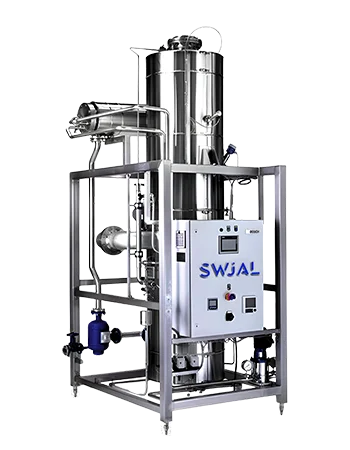
Key Features and Advantages
Pure Steam Generators are designed to meet the unique demands of various industries. Key features include:
High-Purity Steam Production: Ensures sterility and compliance with pharmaceutical-grade requirements.
Energy Efficiency: Optimized design reduces energy consumption, minimizing operational costs.
Corrosion Resistance: High-grade stainless steel construction prevents contamination and enhances durability.
Automation and Monitoring: Integrated control systems enable precise operation, ensuring consistency in steam production.
Compact Design: Space-saving models are ideal for installations in constrained environments.
The use of pure steam generators minimizes the risk of contamination, safeguards product quality, and ensures compliance with health and safety standards.
Applications of Pure Steam Generators
Pure steam generators find widespread application in industries where cleanliness and sterility are critical. Some of the key applications include:
Pharmaceutical Industry: Sterilization of process equipment, pipelines, and manufacturing environments.
Biotechnology: Ensuring aseptic conditions for sensitive biological processes.
Hospitals: Autoclaving surgical instruments and maintaining sterile operating rooms.
Food and Beverage: Sterilization of containers, packaging materials, and processing lines.
Maintenance and Validation
Regular maintenance and validation are essential for ensuring the long-term performance and compliance of pure steam generators. Maintenance tasks include cleaning, inspection of critical components, and replacement of worn-out parts. Validation processes, such as steam quality testing, are conducted to verify compliance with global standards. These measures ensure that the system operates efficiently, delivering pure steam without interruptions.
Industry Standards and Compliance
Manufacturers of Pure Steam Generators adhere to strict standards to ensure quality and reliability. Common standards include ASME-BPE, cGMP, and ISPE guidelines. These standards govern the design, materials of construction, and operational parameters of the systems, ensuring that they meet the specific needs of critical applications.
Conclusion
Pure Steam Generators are indispensable in industries that demand sterility and high-quality steam. Their role in ensuring compliance, safeguarding product integrity, and optimizing operational efficiency cannot be overstated. From advanced automation features to robust designs, these systems address the evolving needs of modern industries.
SWJAL PROCESS Pvt. Ltd. is a leading Pure Steam Generator manufacturer in India.
0 notes
Text
Laboratory Seating: Enhancing Comfort and Productivity in Scientific Spaces
In any laboratory environment, laboratory seating plays a critical role in ensuring the comfort, efficiency, and safety of professionals working in the space. Well-designed seating not only enhances productivity but also promotes better posture and reduces the risks associated with prolonged sitting. Whether it's a research facility, educational laboratory, or industrial testing space, investing in high-quality laboratory seating is essential.
The Importance of Ergonomic Laboratory Seating
Ergonomics is at the heart of effective laboratory seating design. Researchers and technicians often spend extended hours conducting experiments, documenting results, and using complex equipment. Poor seating can lead to musculoskeletal disorders, fatigue, and reduced focus. Ergonomic laboratory seating ensures:
Proper Posture Support: Adjustable seat height, backrest tilt, and lumbar support are key features that cater to individual needs.
Enhanced Stability: Features such as five-point caster bases provide stability, preventing tipping accidents.
Improved Circulation: Well-padded seats and footrests minimize pressure points and improve blood circulation.
Key Features of High-Quality Laboratory Seating
When selecting laboratory seating, it’s essential to consider features that align with the specific demands of the laboratory environment. Key attributes include:
Chemical Resistance Laboratories often handle chemicals and solvents that can damage standard seating materials. High-quality laboratory seating is crafted with chemical-resistant fabrics and coatings to ensure durability.
Adjustability Versatility in seat height, backrest angles, and armrest positioning allows users to customize their seating for maximum comfort.
Mobility and Stability Swivel mechanisms and caster wheels offer mobility, while anti-slip bases ensure safety during stationary tasks.
Hygiene and Cleanability Laboratories require strict hygiene standards. Chairs with smooth, non-porous surfaces are easier to clean and sanitize, ensuring compliance with regulatory guidelines.
Types of Laboratory Seating for Various Applications
Standard Laboratory Chairs
These are versatile options suitable for most laboratory settings. Standard laboratory seating offers essential ergonomic features like adjustable height and padded backrests.
Cleanroom Chairs
Designed for controlled environments, cleanroom seating is constructed with non-shedding materials to prevent contamination. They meet stringent cleanliness standards required in pharmaceutical and semiconductor industries.
ESD-Safe Chairs
For laboratories working with sensitive electronic components, ESD-safe laboratory seating prevents electrostatic discharge, protecting both the user and the equipment.
Stools and Saddle Chairs
Compact and space-efficient, stools are ideal for laboratories with limited space. Saddle chairs encourage active sitting, promoting better posture.
Selecting the Right Laboratory Seating for Your Needs
Choosing the right laboratory seating requires an understanding of your workspace requirements. Evaluate the tasks performed, the duration of use, and the specific risks in your laboratory. Customizable seating solutions can cater to unique needs, ensuring optimal performance and safety.
Benefits of Investing in Premium Laboratory Seating
High-quality laboratory seating offers long-term benefits, including:
Enhanced worker comfort and reduced fatigue.
Increased productivity due to better focus and reduced physical strain.
Compliance with workplace health and safety standards.
Long-term cost savings through durable, low-maintenance designs.
Conclusion
The importance of ergonomic and well-designed laboratory seating cannot be overstated. It directly impacts the health, safety, and productivity of laboratory professionals. By investing in seating solutions tailored to the unique demands of your laboratory environment, you can create a workspace that supports excellence and innovation.
0 notes
Text
What is the Latest Version of ISO 14644?
ISO 14644 is a series of international standards that provide guidelines for the design, operation, and performance of cleanrooms and controlled environments. These standards are essential across industries such as pharmaceuticals, biotechnology, electronics, and aerospace, where contamination control is critical. The most recent updates in the series reflect advancements in cleanroom technology, monitoring, and operational procedures to ensure environments remain contamination-free.
ISO 14644-1: 2015 Classification of Airborne Particles
The latest version of ISO 14644-1** was published in **2015**, which establishes the classification system for cleanrooms based on the concentration of airborne particles. This standard defines the maximum allowable number of particles per cubic meter for each class of cleanroom, with particle sizes measured at **0.5 microns**. For example, **ISO Class 5** allows up to **3,520 particles per cubic meter
at 0.5 microns, and this class is used for highly sensitive processes such as aseptic filling in pharmaceuticals.
ISO 14644-2: 2015 Monitoring and Maintenance
ISO 14644-2:2015 focuses on the ongoing monitoring, testing, and maintenance required to ensure that cleanrooms continue to meet the classification standards set in ISO 14644-1
. The standard specifies how to assess factors like particle counts, airflow, and pressure differentials to maintain consistent air quality. Regular monitoring and validation of these factors ensure that cleanrooms meet strict cleanliness requirements over time.
ISO 14644-3: 2019 Testing and Measurement Methods
The ISO 14644-3** standard, updated in **2019, provides methods for testing and measuring the performance of cleanrooms. It clarifies how to evaluate the effectiveness of air cleanliness, filtration systems, and overall cleanroom performance. The standard outlines protocols for particle counting and the measurement of other factors like airflow velocity, ensuring that cleanrooms maintain the desired level of cleanliness and air quality.
ISO 14644-4: 2001 Design and Construction
ISO 14644-4:2001 outlines guidelines for the design and construction of cleanrooms and associated controlled environments. Although this standard is not as frequently updated as others in the series, it remains crucial for ensuring that cleanrooms are properly built to meet strict cleanliness requirements. This version covers aspects such as airflow design, materials selection, and space layout.
ISO 14644-5: 2004 Operation and Performance
ISO 14644-5:2004 details operational and performance requirements for cleanrooms. It addresses the need for proper procedures, training, and operational protocols to maintain cleanliness standards. It emphasizes the importance of consistent performance in maintaining the integrity of cleanrooms during day-to-day operations.
ISO 14644-7: 2004 CleanRoom Classification in Non-Pharmaceutical Sectors
ISO 14644-7:2004 focuses on cleanroom classifications and standards for non-pharmaceutical applications
such as electronics and aerospace. It provides guidelines for evaluating cleanroom performance and maintaining cleanliness standards specific to these industries.
ISO 14644-8: 2009 Measurement of Air Cleanliness by Particle Concentration
ISO 14644-8:2009 introduces guidelines for measuring air cleanliness by particle concentration. This standard provides detailed methods for measuring airborne particles, focusing on particle size and distribution. It serves as a crucial reference for validating cleanroom performance and confirming that environments meet specified cleanliness levels.
Related ISO 14644 Standards
ISO 14644-1:2015Classification of cleanrooms based on airborne particle concentrations.
ISO 14644-2:2015Monitoring and maintenance guidelines to ensure ongoing cleanroom performance.
ISO 14644-3:2019Testing and measurement methods for assessing cleanroom performance.
ISO 14644-4:2001Design and construction guidelines for cleanrooms and controlled environments.
ISO 14644-5:2004Operational and performance requirements for maintaining cleanroom standards.
ISO 14644-7:2004Cleanroom classification for non-pharmaceutical sectors.
ISO 14644-8:2009Measurement standards for determining air cleanliness by particle concentration.
The latest versions of ISO 14644 standards are essential for ensuring that cleanrooms maintain the highest levels of air cleanliness and operational efficiency. By following these updated guidelines, industries can ensure compliance with global standards, improve product quality, and minimize contamination risks in critical manufacturing environments.
0 notes
Text
Understanding Flip Flap Doors and Their Importance in Industrial Settings | Hicon Engineering Company
Flip flap doors are a popular and innovative solution used in a variety of industrial applications. These doors, known for their quick, efficient operation, offer significant advantages in terms of space-saving, energy efficiency, and ease of use. As one of the trusted flip flap door manufacturers in the industry, Hicon Engineering Company specializes in providing top-quality flip flap doors that meet the diverse needs of businesses worldwide.

What are Flip Flap Doors?
A flip flap door is a type of automatic door that operates by flipping open in a rapid and smooth manner when triggered. These doors are commonly used in facilities where high-speed access and minimal air loss are crucial. Unlike traditional swinging or sliding doors, flip flap doors offer a quick opening and closing mechanism, helping to maintain temperature control and improve operational efficiency.
The construction of flip flap doors typically involves durable materials such as PVC, which offers flexibility and resistance to wear. These doors are designed to automatically seal upon closing, creating a tight barrier that prevents unwanted air exchange, thus maintaining the internal environment of the facility.
Advantages of Flip Flap Doors
Space-Saving: One of the key benefits of flip flap doors is their ability to save space. These doors do not require additional clearance space for opening and closing, making them ideal for narrow aisles, hallways, or areas with high foot traffic.
Energy Efficiency: In industries where temperature control is essential, such as food storage or clean rooms, flip flap doors can play a significant role in reducing energy consumption. Their fast operation minimizes the time doors remain open, helping to prevent the loss of cooled or heated air. This helps maintain a stable temperature inside the facility and reduces the load on HVAC systems.
Hygiene and Cleanliness: Flip flap doors are often used in cleanrooms, laboratories, and food processing environments, where hygiene is a top priority. These doors are designed to minimize the entry of dust, dirt, and other contaminants, ensuring that sensitive environments remain sterile and uncontaminated.
Durability and Low Maintenance: Flip flap doors are built to withstand tough conditions. They are highly durable and resistant to wear and tear, even in high-traffic areas. Furthermore, their automatic operation reduces the need for manual intervention, minimizing the chances of door damage and reducing maintenance costs.
Ease of Use: Flip flap doors are easy to operate and require minimal effort to open and close. With their automated mechanism, these doors can be triggered via sensors or simple control buttons, making them accessible for both employees and equipment operators.
Why Choose Hicon Engineering Company?
As leading flip flap door manufacturers, Hicon Engineering Company is committed to delivering the highest quality products tailored to meet the needs of our clients. We understand that every industry has unique demands, which is why we offer customizable solutions that can be designed to suit specific requirements. Whether you need flip flap doors for high-traffic areas, cleanrooms, or temperature-sensitive environments, we ensure that our doors provide optimal performance and reliability.
At Hicon, we prioritize the use of advanced materials and technology to craft doors that are not only functional but also energy-efficient and environmentally friendly. Our team of experienced engineers works closely with clients to design and implement the perfect door solution for their facility.
Conclusion
Flip flap doors are an essential solution for businesses that require quick access, energy efficiency, and reliable performance in their operations. As experienced flip flap door manufacturers, Hicon Engineering Company is proud to offer high-quality, customized flip flap doors that cater to a wide range of industries. From food processing plants to pharmaceutical facilities, our doors provide the perfect blend of convenience, durability, and energy savings.
If you're looking for reliable and efficient flip flap doors, look no further than Hicon Engineering Company. Contact us today to learn more about our products and how they can enhance your operations.
0 notes
Text
Why Cleanroom Construction in San Diego Requires Specialized Contractors
Cleanroom construction is a profession that involves so much knowledge, skill, and experience that many people cannot undertake it without professional assistance. Many industries for example laboratory, manufacturing and, healthcare in San Diego require cleanrooms that are constructed to certain standards. These rooms are designed to minimize contamination and to guarantee that delicate functions are affected in a clean environment. The slightest of deviation in construction affects the cleanliness and usability of these areas.
1. Specialized Knowledge in Contamination and Management
**San Diego Commercial Contractor**s who focus on cleanrooms are crucial since they have appropriate knowledge of contamination control. Cleanrooms are areas of extreme delicateness where even a small particle can cause an interruption. Some contractors, for example, have the ability and penchant for installing certain materials and structures that cannot accumulate and transmit undesirable elements.
They also know how to provide appropriate airflow systems that will minimize on the presence of air particles. Since the contractors in cleanroom construction have a rich experience, they guarantee their clients that the cleanroom has met the required standards of cleanliness and safety.
2. Awareness of High Regulatory Compliance
Under special sectors of application like healthcare, pharmaceutical and technology, cleanrooms need to adhere to regulatory compliance. Specialist contractors are aware of the current laws which apply to them and how to apply them into practice. For instance, they observe procedures of airflow, temperature, and pressure for the cleanroom to perform appropriately.
https://jpcdn.it/img/r/485/272/6a0aaaedbe1575853a1960f4003273b7.jpg
These contractors appreciate these regulations, and that is why they have the best knowledge of how to design and construct a cleanroom. Unknowingly, projects are likely not to meet such rigorous standards that are in place to ensure all conditions are met, leading to costly delays or even the facility's closure.
3. Accuracy in Planning and Implementation
Cleanrooms are sensitive structures that require significant construction project management****, especially at the construction design stage. Architects and engineers employ specialized contractors for the project, and everybody ensures every detail is as expected. MSDS has employed advanced technologies and quality materials to develop adequate cleaning standards, product sturdiness, and performance effectiveness.
A specialized contractor understands that measurements and layouts are critical to any construction project. Even the ceiling and the flooring are not exempt from this since everything has to be precise to achieve a controlled environment. Contractors who have work experience and specific training in cleanroom construction can accomplish this level of work.
Conclusion
In particular, for those harbingers of San Diego needing cleanrooms, it is important to select a contractor of a similar nature. Little Brothers Construction has a cleanroom construction service enhanced by its many years of providing general contracting services. Little Brothers Construction is one of the best **San Diego Commercial Contractors—**we know the specific needs of cleanrooms and only work to industry standards.
For your cleanroom construction needs in San Diego, turn to Little Brothers Construction for properly built, HEPA-compliant cleanrooms. With their guidance and assistance, your cleanroom will be as compliant, secure, productive, and dependable as it should be for your most critical operations.
0 notes
Text
Premium Cleanroom Doors: Materials and Features

clean room doors manufacturers, crafted with precision by leading manufacturers, ensure durability and functionality in controlled environments. These double-skin doors, available with or without view panels, are constructed using GPSP GI sheets (0.8–1.2 mm thick) and frames (1.2–1.6 mm thick), with options for fire-rated designs. Featuring a shutter thickness of 42–46 mm and a powder-coated or stainless-steel finish (60–80 microns), the doors are customizable in sizes ranging from 50 mm to 150 mm in frame thickness and widths up to 2200 mm. Equipped with stainless steel hardware, safety glass view panels, and advanced accessories like automatic seals and panic bars, these doors are filled with PUF, PIR, or ROCKWOOL for superior insulation and strength.
0 notes
Text
Top 5 Benefits of Using Backward Curved Blowers for Industrial Applications
In industrial facilities, efficient air movement is essential for ventilation, cooling, and maintaining clean working conditions. Backward curved blowers, often preferred for their superior performance, are a game-changing solution for industries ranging from manufacturing to cleanrooms. In this article, we’ll explore the top 5 benefits of using backward curved blowers, share real-world case studies, and answer common questions to help you understand their role in industrial efficiency.

1. Energy Efficiency
Backward curved blowers are known for their high energy efficiency. Thanks to their aerodynamic design, they reduce energy consumption by minimizing air resistance during operation. The backward-curved blades allow for smooth airflow with less turbulence, leading to lower energy costs and better overall system performance.
Example: In a textile plant, replacing forward-curved fans with backward blowers led to a 15% reduction in energy usage, resulting in annual savings on electricity costs and improved airflow.
2. Lower Noise Levels
Industrial facilities can be noisy, but backward curved blowers contribute to a quieter working environment. Their design reduces the turbulence of air passing through the fan, lowering the noise output significantly compared to other blower types.
Example: A chemical processing plant implemented backward blowers to meet noise compliance standards. This not only created a safer workplace for employees but also reduced maintenance requirements for surrounding equipment.
3. Reduced Maintenance Costs
Backward curved blowers are more durable and require less maintenance. Their sturdy construction minimizes wear and tear, while the self-cleaning design of the curved blades prevents dust buildup that could reduce efficiency over time.
Example: In a cement factory, backward blowers reduced dust clogging by 20%, leading to fewer downtimes and 30% lower maintenance costs compared to traditional forward-curved fans.
4. Superior Performance for High-Pressure Applications
Backward curved blowers excel in high-pressure environments where robust performance is essential. Whether in HVAC systems, industrial cooling, or material transport, they deliver reliable airflow with minimal losses.
Example: An HVAC contractor reported improved ventilation efficiency in a large commercial mall after installing backward blowers, achieving consistent air circulation even in high-resistance ducts.
5. Versatility Across Industries
Backward curved blowers are highly versatile and used across industries such as:
Manufacturing: Ventilation and cooling systems.
Textile Mills: Removing heat and dust buildup.
Cleanrooms: Airflow control in pharmaceutical or electronic production.
HVAC: Optimizing air movement in large buildings.
Chemical Plants: Handling corrosive environments and exhaust systems.
Example: A pharmaceutical cleanroom achieved precise airflow control and contamination-free ventilation using backward blowers, ensuring compliance with air quality standards.
Comparison of backward curved blowers with traditional (forward-curved) fans:


Case Studies: Central Blower’s Backward Curved Blowers in Action
Case Study 1: Reducing Energy Costs in a Textile Manufacturing Facility
Challenge: A textile plant faced rising energy bills and poor ventilation efficiency due to outdated forward-curved blowers. Solution: Central Blower’s backward curved blowers were installed across production lines. Results:
15% energy savings annually.
Improved air quality and working conditions.
ROI achieved within 9 months.
Case Study 2: Maintenance Savings in a Cement Factory
Challenge: Dust accumulation caused frequent shutdowns and increased maintenance costs. Solution: Central Blower’s backward curved blowers replaced traditional fans. Results:
30% reduction in maintenance costs.
Fewer unplanned downtimes, improving operational efficiency.
Longer equipment lifespan.
FAQs About Backward Curved Blowers
1. What is a backward blower?
A backward blower (or backward curved fan) features blades that curve away from the direction of the fan's rotation. This design enhances efficiency by reducing turbulence and energy loss, making it ideal for high-pressure and energy-efficient applications.
2. How do backward curved fans save energy?
Backward curved blades allow for smoother airflow with less resistance. This reduces energy consumption compared to forward-curved fans, especially in applications requiring high-pressure airflow.
3. What industries use backward blowers?
Backward blowers are widely used in:
HVAC systems for large commercial buildings.
Manufacturing plants for ventilation and cooling.
Cleanrooms in pharmaceuticals and electronics.
Textile factories for heat and dust removal.
Cement and chemical plants for dust control and exhaust systems.
Conclusion
Backward curved blowers offer unmatched benefits in terms of energy efficiency, noise reduction, and durability for industrial applications. As showcased in the case studies, industries using Central Blower’s backward curved fans have achieved substantial cost savings and improved performance.
If you’re looking to upgrade your ventilation or air handling systems, contact Central Blower today for expert advice and solutions tailored to your needs.
0 notes